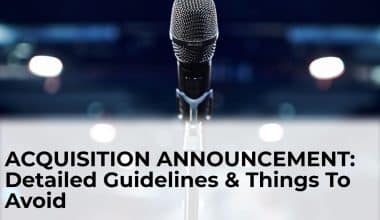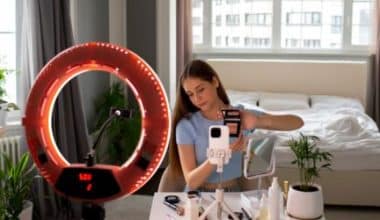To unlock your brand’s full potential and make it stand out among the competition is every marketer’s dream. Whether it’s teaming up with big-name brands or becoming a brand ambassador yourself, getting a grip on PR is essential.
This ultimate guide provides an in-depth look into how to reach out to brands for PR, how to join a PR list, and how to ask a brand for sponsorship. But how exactly do you navigate this journey? Strategy and execution come into play. The decisions you make shape the path ahead. From crafting compelling pitches to building lasting relationships with influencers, every step you take brings you closer to your goal.
How to Reach Out to Brands for PR
Think of PR as the magic wand that can help transform your brand’s identity and amplify its presence in the market. One of the most effective ways to elevate your brand’s presence is by reaching out to established brands for public relations (PR) opportunities. But how exactly do you approach these potential partnerships?
Don’t worry, I’ve been there too. That’s why I’ve put together a list of proven methods to help you connect with brands for PR. Keep reading to learn from my experiences and discover the essential steps to building meaningful relationships with brands.
Top 5 Ways to Reach Out to Brands for PR
#1. Research and Identify Potential Brands
Researching and identifying potential brands for collaboration was an exciting journey for me. I wanted to find brands that not only resonated with my business but also shared similar values and appealed to my audience.
So, I began by combing through social media platforms where my target audience was most active. I scrolled through feeds, engaged with content, and paid attention to brands that seemed to capture the same vibe I was aiming for. It was like uncovering hidden gems in a treasure hunt, each discovery bringing me closer to finding the perfect match.
Google Alerts became my secret weapon in staying updated with relevant news and developments in my industry. Setting up alerts for keywords related to my niche allowed me to receive timely notifications about potential collaboration opportunities with brands that were making waves.
PR databases provided another valuable resource in my quest to connect with brands. I sifted through listings, studying past campaigns and partnerships to gauge whether a brand aligned with my goals and vision. It felt like browsing through a book of ideas, imagining all the cool partnerships that could happen.
In the end, it wasn’t just about finding brands to work with, it was about finding partners who understood my brand’s essence and shared my passion for delivering value to our mutual audience. Each step of the research process brought me closer to forging meaningful connections and laying the groundwork for exciting collaborations ahead.
#2. Create a Strong Online Presence
The next thing I did after researching potential brands was to dedicate my time to refining my social media profiles, ensuring they reflected my brand’s ethos and values with content that resonated with my target audience, maintaining a consistent posting schedule, and actively engaging with followers through comments and messages.
Simultaneously, I revamped my website to showcase my work, services, and achievements in a visually appealing and user-friendly manner. I focused on creating compelling content that highlighted my expertise and the unique value I could offer to potential partners.
Throughout this process, I continuously monitored analytics to track the effectiveness of my online efforts and made adjustments as needed to optimize engagement and visibility. By meticulously crafting and curating my online presence, I was able to position myself as a credible and attractive collaborator for brands seeking partnerships.
Before reaching out, ensure that your online presence is polished and professional. Brands will look at your social media profiles, website, and content to assess potential partnerships. Focus on high-quality content, consistency, and engagement with your audience.
#3. Build a Media Kit
A media kit is an essential tool when reaching out to brands. It should include your bio, audience demographics, social media statistics, past collaborations, and any relevant press coverage. A well-crafted media kit demonstrates your professionalism and the value you can offer.
Building a media kit was a crucial step in my journey of reaching out to brands. I gathered all the necessary information, crafting each section of the media kit and carefully selected the most compelling statistics and highlights to showcase the value I could offer to potential partners.
Once the media kit was complete, I felt a sense of pride and professionalism knowing that I had a comprehensive tool to present myself to brands. It gave me confidence in my outreach efforts and reinforced my credibility as a collaborator worth considering.
As I began reaching out to brands, I included my media kit as part of my introduction, allowing them to quickly understand who I was and what I could bring to the table. The positive responses and opportunities that followed validated the effort I had put into creating a polished and impactful media kit.
#4. Craft a Compelling Pitch
Your pitch to the brand should be concise, personalized, and compelling. Highlight what excites you about the brand, how your values align, and what unique perspective you can bring to the table. Include specific ideas for collaboration and how it will benefit both parties.
#5. Follow Up
Following up is key in the pitching process. If you don’t receive a response within a week or two, send a polite follow-up email reiterating your interest and addressing any potential concerns.
How Do I Join a PR List?
Now that you know how to reach out to brands for PR, let’s talk about another way to get your brand noticed: joining PR lists. These lists are like VIP passes to special opportunities and connections in your industry. I’ll show you how to get on one and make the most of it for your brand’s success.
#1. Connect with PR Agencies
PR agencies often manage the outreach for brands and maintain comprehensive PR lists. Networking with these agencies can open doors to numerous opportunities.
Attend industry events, engage with agency representatives on social media, and express your interest in joining their lists.
#2. Subscribe to Industry Newsletters
Many industries have newsletters and databases that list press opportunities. These resources can provide valuable information on brand PR initiatives and how to get involved. You just have to find them!
#3. Leverage Social Media and Networking Platforms
Platforms like LinkedIn and Twitter are excellent for connecting with industry professionals and staying informed about PR opportunities. Join relevant groups, participate in conversations, and share your expertise to build credibility and visibility.
#4. Direct Outreach
Directly contacting PR managers and coordinators can be highly effective. Use platforms like LinkedIn to find the right contacts and send thoughtful messages about your interest in their brand and PR list. Highlight any mutual connections or shared professional interests.
#5. Maintain Relationships
Networking does not end with a single email or event. Continuously nurture your relationships with PR professionals by engaging with their content, offering to help on mutual interests, and keeping them updated on your successes and milestones.
How Do You Become a Brand PR?
The following are sure ways you can become a Brand PR
#1. Develop Your Brand Identity
Your brand identity is crucial in positioning yourself as a potential brand PR. Clearly define your niche, values, and target audience. Utilize your platforms to convey your brand message consistently.
#2. Build Credibility and Authority
Establish yourself as an authority in your field through high-quality content, public speaking engagements, and industry contributions. Write guest posts, appear on podcasts, and create educational content that showcases your expertise.
#3. Showcase Your Work
Have a portfolio that highlights successful projects and collaborations. Case studies, testimonials, and metrics demonstrating the impact of your previous partnerships can be influential in convincing brands of your credibility.
#4. Engage Authentically
Authentic engagement with brands on social media can catch their attention. Share their content, participate in conversations, and show genuine interest in their initiatives. This organic connection can lead to collaboration opportunities.
#5. Proactive Proposals
Don’t wait for brands to approach you. Create proactive proposals that outline how a potential collaboration could unfold. Highlight your ideas, the expected outcomes, and why partnering with you would be beneficial for the brand.
How Do I Ask a Brand to Sponsor Me?
#1. Identify Sponsorship Opportunities
Before approaching a brand for sponsorship, clearly define what type of sponsorship you are seeking. It could be for an event, your social media content, or a specific project. Ensure your sponsorship proposal aligns with the brand’s goals and values.
#2. Research the Brand’s Sponsorship History
Understanding a brand’s previous sponsorship activities can provide insights into what they value in partnerships. Analyze their past sponsored content, events, and influencers to tailor your pitch accordingly.
#3. Prepare a Detailed Proposal
Your sponsorship proposal should be comprehensive and detailed. Include an overview of your project or initiative, your audience demographics, the expected reach and impact, and the specific benefits for the brand. Clearly outline what you are asking for and what you are offering in return.
#4. Highlight Mutual Benefits
Emphasize the mutual benefits of the sponsorship. Demonstrate how the partnership can enhance the brand’s visibility, engagement, and sales. Utilize metrics and case studies to back up your claims.
#5. Personalize Your Approach
Tailor each proposal to the specific brand. Avoid generic templates and focus on the unique aspects of each brand and how your collaboration stands out. Personalized outreach shows your dedication and understanding of the brand.
#6. Follow Up Professionally
If you don’t receive an immediate response, don’t be discouraged. Follow up with a professional and courteous email reiterating your interest and adding any additional information that might be helpful.
How Do PR Packages Work?
A PR package is a curated and personalized collection of your brand’s products that you send to social media influencers. You send PR packages to influencers packages to encourage the sharing of your products to a wider audience.
How Do I Package a PR Package?
A PR package is no longer just a box; it’s an extension of your brand. Use visually appealing elements, high quality, excel at first impressions, and consider personalization. Create a moment that influencers want to share with their following by designing a memorable unboxing experience.
Does PR cost money?
Most PR firms charge a monthly retainer, and generally for a set number of months. For example, a PR firm might charge $20,000 per month for six months, or $50,000 per month for 12 months, or $4,500 per month for four months.
How do I ask for PR from a brand?
You should start by introducing yourself to the brand and explaining why you are reaching out. You should also state how being on their PR list could be beneficial for not only yourself but the brand as well. They will want to know how you can help them. Make sure that you make this clear!
In Conclusion
Obtaining PR from brands and becoming a brand ambassador involves strategic planning, persistent effort, and a genuine passion for the products and values you wish to represent.
By researching potential brands, creating compelling pitches, and building strong relationships, you can successfully navigate the path to brand ambassadorship.
Authenticity and mutual respect are key components in forming lasting and impactful partnerships, dedication and professionalism shine through in every interaction.
Related Articles
- SMART PR Goals: Examples & All You Need
- What a PR Strategist Really Does: (+ Free Helpful Tips)
- What is PR Measurement: How Experts Prove Effectiveness
- Bad PR Examples & Lessons You Should Learn (Expert Tips)
- Elevate Your Brand’s Marketing Strategies With PR Boxes






